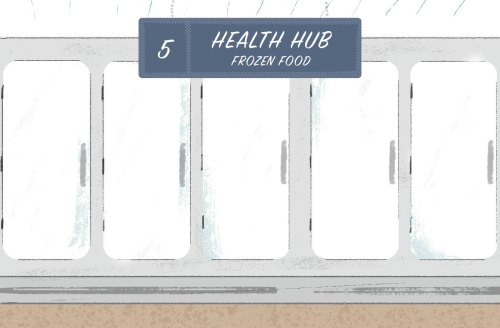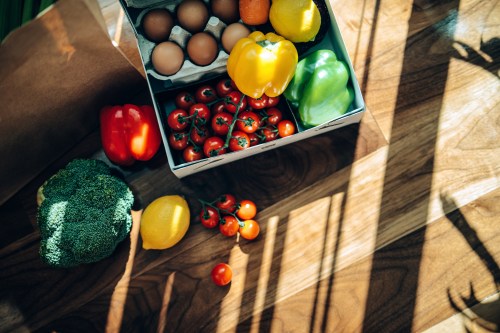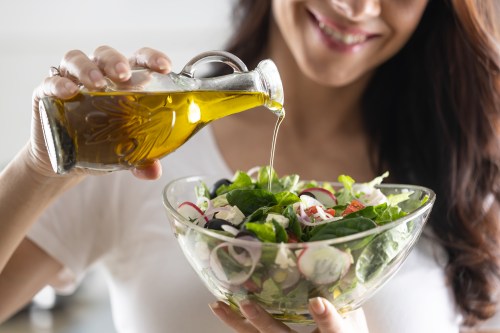When I was a kid, there was nothing more dull to me than going to the grocery store with my parents. It seemed to take them forever to decide between Grape Nuts and Wheaties while I looked longingly at the Lucky Charms. But little me loved when we’d stop in the freezer aisle. Between Kid Cuisines, Hot Pockets, frozen French bread pizza, and tubs of ice cream, this part of the grocery store had all the best, gloriously unhealthy foods (only allowed in my house on special occasions). Looking back, it was enough to give a healthy eater the shivers—and not just because it’s ten degrees colder than the rest of the store.
Now that I’m an adult with healthier habits—hey, I am a Well+Good editor after all—the frozen food aisle makes me smile for a completely different reason. It’s now where all the quick-and-easy, legit nutritious stuff hangs out. Look behind that frosted glass and you’ll find cauliflower pizza, frozen acai packets, broccoli tots…how times have changed! And consumers are into it: New research from the American Frozen Food Institute and the Food Marketing Institute say frozen food sales outpace that of other aisles.
This is amazing and all, but how—and when—did this exactly happen?
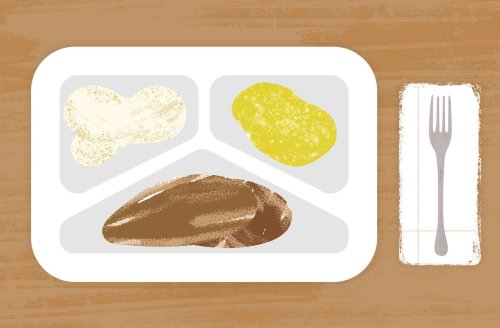
The surprisingly innovative origins of frozen food
When Swanson introduced TV dinners in 1953, they were an instant hit. The second year they were on the market, they sold over 10 million meals. Fun fact:”This all happened because Swanson had half a million pounds of leftover turkey to get rid of after Thanksgiving,” food historian Sarah Wassberg Johnson says.
It didn’t take long for other companies to follow suit, crowding the freezer aisle with more heat-and-eat options. “Even before most people had microwaves, the meals were designed to just stick in the oven and heat up,” Johnson explains. “So all [someone] had to do was put a frozen lasagna in the oven and she was able to feed her whole family.”
As more women, traditionally the ones responsible for feeding their families, entered the workforce in the ’60s and ’70s, TV dinner sales remained steady. And even though they migrated from the oven to the microwave, Johnson says the basic formula didn’t change. “They were all essentially a meat in some sort of gravy or sauce, with a small serving of vegetables.”
There were also plenty of frozen veggie options, which Johnson says was lead by Birdseye. “Their real innovation was subzero flash freezing, which preserved the nutrients and taste in foods like sweet corn, peas, and berries—which didn’t particularly can well. Prior to that, people had to wait until those foods were in season, or their only option was to buy canned, which definitely doesn’t taste as good.”
The evolving tastes in food
For the most part, frozen food stayed strictly in those three lanes: TV dinners, frozen fruits and veggies, and ice cream and other desserts. That’s certainly a far cry from the proliferation of options available today—what exactly changed?
“People still want convenience food, but the difference is that they started demanding healthier convenience food,” Johnson says. (Another example of this: the rise in healthy fast-casual restaurants.) This created frozen shelf space for lots of new, emerging brands catering to that exact need. Cauliflower crust pizza brand Caulipower, for example, launched just two years ago but is already in over 15,000 different stores. (The demand for cauli-crust pizza is real, people.) Other popular newcomers to the frozen section include Halo Top (low-calorie, high-protein ice cream), Evol (high quality frozen meals), and a hearty selection of gluten-free bread.
“I see the frozen food section as the hub of innovation.” —Allison Kuhn, RD, director of nutrition at Kroger
Our expanding palates also contributed to this healthy freezer overhaul. “Edamame is definitely not something you would have seen in the frozen food section at mainstream grocery stores even 10 years ago, but now it’s everywhere,” says Allison Kuhn, RD, Kroger’s director of nutrition. “Consumers now—millennials especially—want more sophisticated foods, even if they are just heating them up and making them in five minutes,” Johnson adds. Mystery meat and gravy no longer cuts it; shoppers today want something organic and spiced up with ingredients like turmeric, cardamom, saffron, or sesame. Of course, there’s also the undeniable rise in plant-based eating, which has led to more meat substitutes, like Beyond Meat, but also a wide range of dairy-free ice creams and desserts.
“I see the frozen food section as the hub of innovation,” says Kuhn. “Because the frozen food section isn’t limited to one type of food, it’s really the culmination of what’s happening in the food space as a whole.” She says that since the process of flash freezing holds nutrients so well, big brands are more easily able to scale it—as opposed to the middle aisles of the grocery stores, which, in many ways, are still figuring it out.
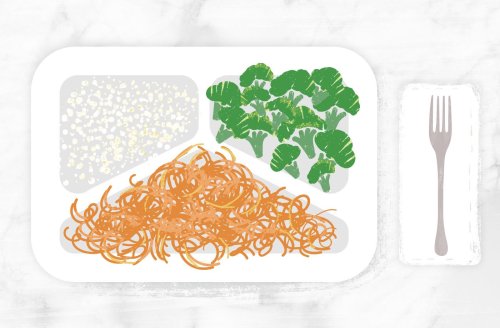
Changing with the times
Change didn’t just come from a new guard of products; established brands quickly learned they had to adapt to these demands or get left behind. Stouffer’s, for example, recently launched boxed frozen meal kits. “Meal kits are another trend you see in the frozen food section,” Johnson says. “It’s a spill-over from delivery services like Blue Apron and Purple Carrot. People want to feel like they’re cooking, without it being so time-consuming. It’s the boxed cake mix of our time.”
The most interesting case study is Green Giant. Once known for selling frozen veggies in preservative-heavy sauces, the brand has evolved to now sell riced vegetables (including sweet potato, broccoli, and beets), spiralized veggies, and a whole slew of cauliflower-based products. “When B&G Foods acquired the brand from General Mills in 2015, it was struggling. The items had been around for years and hadn’t really been contemporized or brought forward with the trends,” says Jordan Greenberg, Green Giant’s vice president and general manager. “Essentially, everything was heavily sauced with things like cheese and butter. We made it our goal to give consumers ways to make vegetables the star of their meal, not the side.”
The brand did lots of research to figure out its next move. “It was an educated decision we came up with by really looking at what was going on in pop-culture, the media, and social media; just what consumers were doing,” Greenberg says (which was ricing vegetables, spiralizing zucchini, and making cauliflower crust from scratch). “It just hadn’t really been commercialized yet.” It worked—big time. Greenberg says Green Giant’s new product line sells well in literally every state. A rep from the brand says that in 2017, sales totaled nearly $80 million.
The future of frozen
Obviously, the freezer section still offers sugary desserts, preservative- and sodium-laden microwave meals, and some of those old stand-bys ideal less for long-term health and more for late-night emergency snacking. But overall, the freezer section has graduated from its ’50s mindset seemingly overnight. One could perhaps argue that the massive shift to “healthified” frozen foods was less of a leap and more of a natural extension of the category’s DNA: finding a more convenient way to eat.
So what’s next for frozen food? To Johnson and Greenberg’s points, it’s really up to the us, the people buying the food. The rise of low-carb eating is already leading to new products in this space, like frozen Paleo waffles. And now that gut health is a major focus for health-conscious consumers, more probiotic-based food products are filling frozen shelves, too.
Perhaps that’s what’s most exciting. As long as consumers continue to make their demands known, the healthy changes will keep coming.
Originally published January 28, 2019. Updated January 30, 2019.
For insight into what other healthy changes are going to take over the world, check out Well+Good’s 2019 Wellness Trends. And speaking of going viral, here’s why everyone is obsessed with their Instant Pot.
Sign Up for Our Daily Newsletter
Get all the latest in wellness, trends, food, fitness, beauty, and more delivered right to your inbox.
Got it, you've been added to our email list.
